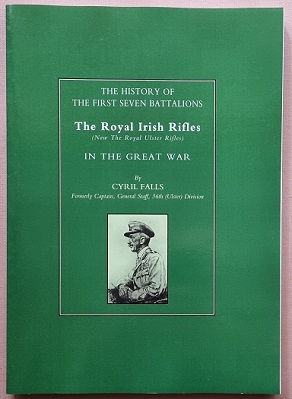Description
Title: War Record of the 21st London Regiment – First Surrey Rifles 1914 -1919
Author:
Condition: Mint
Edition: 2nd Edition
Publication Date: 2003
ISBN: 9781843426196
Cover: Soft Cover without Dust Jacket – 277 pages
Comments: The history of the 1st and 2nd battalions of the 21st London Regiment (1/21st and 2/21st). 1/21st fought on the Western front from May 1915 to the armistice, 2/21st was in France from June to November 1916, in Macedonia to June 1917, and then Palestine to June 1918 when it was disbanded.
The 21st Battalion, London Regiment, was a pre-war Territorial battalion in the 6th London Brigade, 2nd London Division, based on Camberwell. In 1915 the brigade was numbered 142nd and the division 47th. As with other TF battalions a second line battalion (2/21st) was raised soon after the outbreak of war and allocated to the newly formed 2/6th London Brigade, 2/2nd London Division – subsequently numbered 181st Brigade, 60th Division.
1/21st went to France in May 1915 and fought on the Western Front in the same brigade and division till February 1918 when, following the reorganisation of the BEF from four to three-battalion brigades, it was transferred to 140th Brigade, still in 47th Division, and soldiered on to the armistice. 2/21st went to France in June 1916 and in November that year its division (60th) was sent to Salonika and fought in that theatre till June 1917 when it was transferred to Palestine.
In June 1918 the battalion was disbanded and personnel were posted to other battalions of the division. In all 26 Battle Honours were awarded, reflecting service in three theatres of war, and the total dead numbered 58 officers and 988 other ranks. The book is divided in two parts, one for each battalion and at the end there is a consolidated list of honours and awards, including MiD and foreign awards, and a combined Roll of Honour with officers and other ranks shown separately, the latter extracted from Soldiers Died, and there is an index. This is a good, business-like history, based on the contributions of several members of the battalions. There is plenty of detail and the narrative is anecdotal rather than formal and is easy to read and take in.
The downside is there are no maps nor contemporary photos normally found in a unit history. In the case of the much longer Part I the story progresses chronologically with a chapter devoted to specific and stated time periods, and at the end is a useful table showing for every month periods spent in the line, and in brigade, divisional, corps or army reserve. Part two consists of three chapters, one to each theatre of war in which the 2nd Battalion served.





